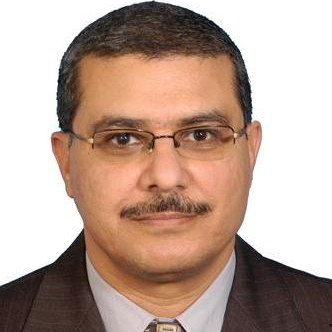
Khalid A. Eldrandaly
Work place: Information Systems and Vice Dean for Academic Affairs, Faculty of Computers and Informatics, Zagazig University, Egypt
E-mail: khalid_eldrandaly@zu.edu.eg
Website:
Research Interests: Decision Support System
Biography
Dr. Khalid A. Eldrandaly is an Associate Professor of Information Systems, Vice Dean for Academic Affairs, Faculty of Computers and Informatics, CIO and Director of the Communication and Information Technology Center, Zagazig University, Egypt. Dr. Eldrandaly is a certified GIS professional (GISP). He received his Ph.D. degree in Systems Engineering (GIS). He was a visiting scholar at Texas A&M University, USA, for two years. His research interests include GIS, Expert Systems, SDSS, MCDM, and Intelligent Techniques in Decision Making. Dr. Eldrandaly is a member of the Egyptian Engineers Syndicate, World Academy of Young Scientists (WAY), Arab Union of Scientists and Researchers (AUSR), Texas A&M International Faculty Network, Egyptian Software Engineers Association (ESEA), GIS Certification Institute, International Society for Environmental Information Science, and Association of Computing Machinery (ACM). He also currently serves as a member in the Review Committee of the IAJIT, IJGIS, IJOPCM, ASOC, ACIT, JEI, FCT and AJSE.
Author Articles
An Expert GIS-Based ANP-OWA Decision Making Framework for Tourism Development Site Selection
By Khalid A. Eldrandaly Mohammed A. AL-Amari
DOI: https://doi.org/10.5815/ijisa.2014.07.01, Pub. Date: 8 Jun. 2014
The selection of a tourism development site involves a complex array of decision criteria that may have interdependence relationships within and between them. In the process of finding the optimum location that meet desired conditions, the analyst is challenged by the tedious manipulation of spatial data and the management of multiple decision-making criteria. This paper presents a novel decision making framework in which expert systems (ES), and geographic information systems–based multicriteria evaluation techniques (Analytical Network Process and fuzzy quantifiers-guided ordered weighted averaging operators (GIS-based ANP-OWA)) are integrated systematically to facilitate the selection of suitable sites for building new tourism facilities. First, ES is used for recommending the proper site selection criteria and their interdependence relationships. Then, the GIS-based ANP-OWA is used to perform the spatial data analysis necessary to generate a wide range of possible candidate sites’ scenarios taking into accounts both the interdependence relationships between sitting criteria and the level of risk the decision-makers wish to assume in their multicriteria evaluation. A typical case study is presented to demonstrate the application of the proposed decision making framework.
[...] Read more.Other Articles
Subscribe to receive issue release notifications and newsletters from MECS Press journals